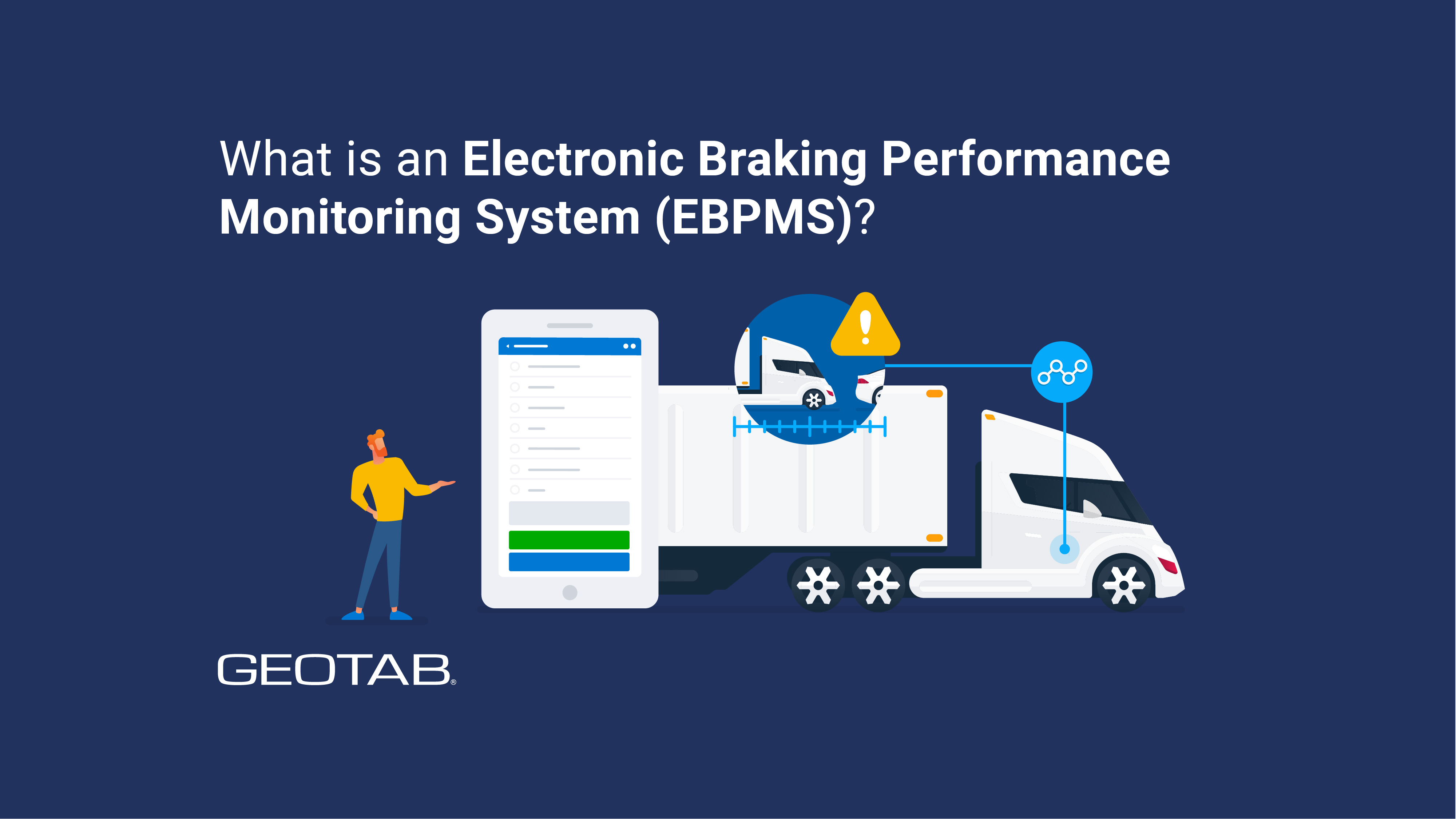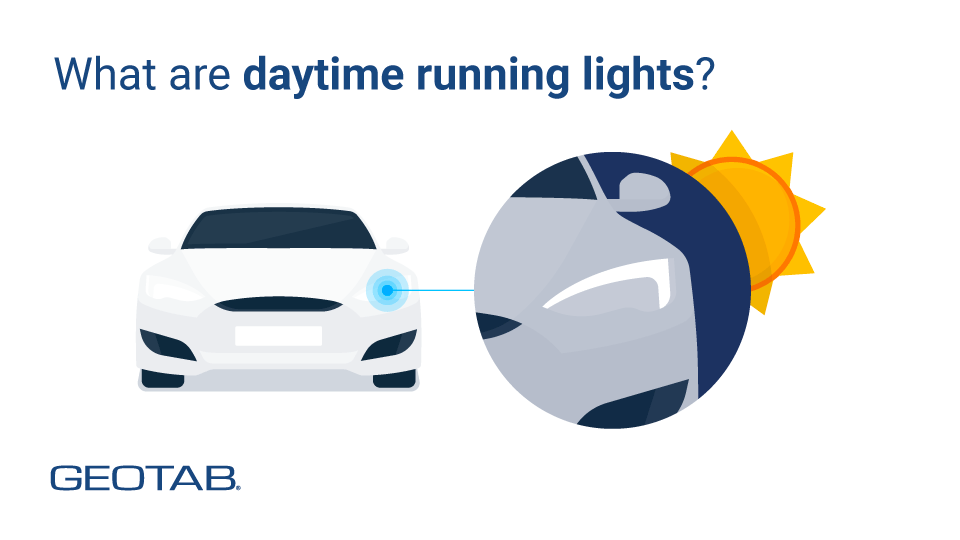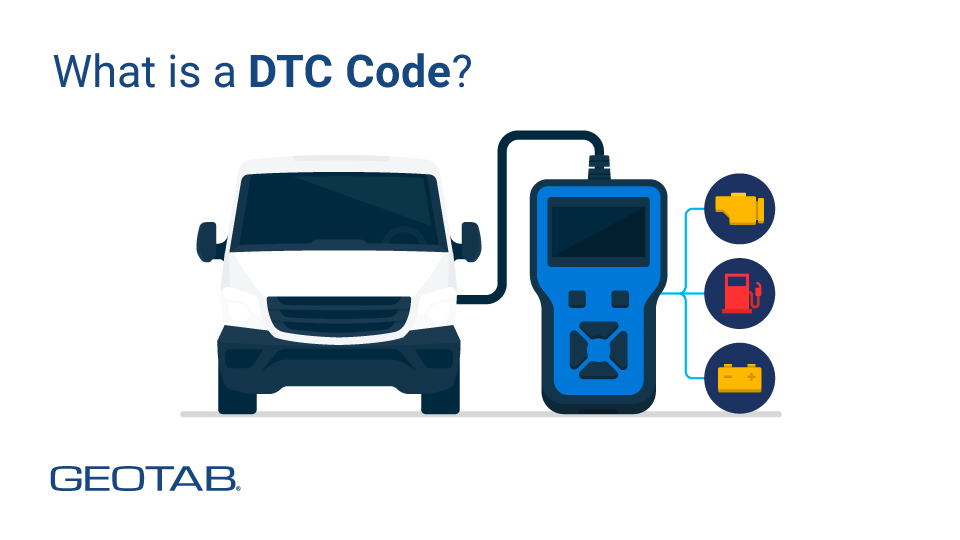EBPMS: Electronic Braking Performance Monitoring System
June 30, 2025
•3 minute read

Definition
- An Electronic Braking Performance Monitoring System (EBPMS) is an onboard system that continuously tracks and analyzes a vehicle’s braking effectiveness by monitoring parameters like brake force and pressure.
An Electronic Braking Performance Monitoring System (EBPMS) is a telematics solution that continuously monitors, analyses and records the braking performance of fleet vehicles like trailers. An EBPMS monitors a vehicle’s braking performance in real time, helping fleet managers prevent brake issues, avoid collisions or downtime, and meet safety requirements more easily.
What is an Electronic Braking Performance Monitoring System (EBPMS)?
An Electronic Braking Performance Monitoring System (EBPMS) is an onboard system that continuously tracks and analyses a vehicle’s braking effectiveness by monitoring parameters like brake force and pressure. Using this real-time data, the EBPMS calculates a vehicle’s Braking Performance Value (BPV) to help fleet managers assess a trailer’s brake health and identify potential problems without manual inspection or roller brake testing. EBPMS are especially vital for heavy-duty trucks, trailers and commercial vehicles where maintaining consistent braking performance is essential for safety and compliance.
How does an EBPMS work?
An EBPMS works by automatically gathering data from a vehicle’s sensors in systems like its Electronic Braking Systems (EBS) or Anti-lock Braking Systems (ABS) before, during and after a braking event. The EBPMS uses this data to analyse how much force the trailer’s brake generates, and combines this data with analysis from other telematics systems to consider the axle loads and vehicle speed. Based on continuous sampling of this braking data, the EBPMS calculates the Braking Performance Value (BPV), which reflects whether the vehicle meets the required braking standards. Fleet managers should use EBPMS software that can aggregate this information over time to produce regular performance reports and alert them when a trailer’s braking efficiency falls below a critical threshold.
Overview of EBPMS benefits
Electronic Braking Performance Monitoring Systems have become a key component of fleet management, offering many operational, safety and compliance benefits:
- Simplified compliance: EBPMS helps fleet managers prove braking compliance through logged data records that help reduce the need for physical inspections.
- Remote diagnostics: Because an EBPMS delivers braking performance data directly to fleet management systems, managers can monitor braking performance while a vehicle is on the road.
- Reduced downtime and repair costs: An EBPMS can alert a fleet manager to emerging braking issues so they can be fixed before causing vehicle breakdowns and costly repairs that disrupt operations.
- Safer vehicles: Using an EBPMS helps improve driver and vehicle safety by recognising brake performance degradation before it turns into a problem.
- Support for earned recognition schemes: In countries like the UK, using EBPMS can help a fleet achieve Driver and Vehicle Standards Agency (DVSA) earned recognition by providing electronic proof of performance. Having earned recognition makes a fleet less likely to face inspections and shows potential customers its commitment to safety.
Understanding Braking Performance Value (BPV)
Braking Performance Value (BPV) measures a vehicle’s ability to decelerate and stop using its braking system based on continuous data sampling during operation. BPV is expressed as a percentage of gravitational acceleration (9.81 m/s²) that indicates a vehicle’s braking force relative to its weight.
Why is BPV important?
BPV is used as a key performance indicator for vehicle safety. Regulatory bodies like the DVSA define minimum BPV thresholds to determine whether a vehicle is roadworthy. If a vehicle falls below these levels, it could trigger service alerts, maintenance actions or even take the vehicle out of service. Beyond regulatory compliance, BPV is often used to assess and compare the braking performance of different vehicles in a fleet.
How is BPV Calculated?
BPV is usually derived from:
- Demand pressure: The amount of air pressure applied to the vehicle’s brakes, usually measured in bar.
- Deceleration (m/s²): The rate at which the vehicle slows down, calculated using speed sensors on the wheels that track speed over time.
- Axle load: The weight distribution across the vehicle’s axles during braking.
- Road gradient: Any decline or incline in the road where the vehicle is braking.
BPV is calculated by extrapolating the braking effort to the maximum 6.5 bar demand pressure. This produces a reliable measurement of the vehicle’s braking performance during maximum demand conditions. Fleets benchmark their BPV results against compliance thresholds in their areas of operation, which are usually ≥50% braking efficiency.
Key components of EBPMS
An EBPMS is made up of several components that are usually built on top of a vehicle’s existing braking and telematics systems. These components include:
- Brake pressure sensors – Monitor how much air pressure is applied during braking events.
- Wheel speed sensors – Calculate deceleration by measuring speed over time.
- Axle load sensors – Measure how much weight each axle carries, which is crucial for BPV calculations.
- Electronic Control Unit (ECU) – Collects and stores data from the electronic braking system and other systems.
- Telematics integration module – Transfers performance data to fleet management platforms or compliance databases.
How EBPMS improves operational efficiency
While the primary purpose of EBPMS is to improve safety, EBPMS also plays a key role in improving operational efficiency for a vehicle fleet. Here are some ways EBPMS improves fleet performance:
- Better fuel usage: By improving braking performance, EBPMS also improves fuel economy by making vehicles easier and more efficient to drive.
- Simplified compliance: Because EBPMS automatically collects and logs braking data, it makes it easier to comply with regulations and reduce a fleet’s administrative burden and risk of fines.
- Preventative maintenance planning: Continuous monitoring of brake health with EBPMS makes it much easier for fleet managers to be proactive in their vehicle maintenance by identifying brake wear before costly and dangerous failures occur.
Future trends in fleet management and EBPMS
As fleets evolve their management strategy with telematics, EBPMS are also evolving. Here are some future EBPMS trends to watch:
- Integration with AI and predictive analytics: Future EBPMS solutions may predict brake failures days or weeks in advance with more advanced predictive capabilities.
- Expanded sensor networks: As vehicles expand their sensors and digital features, EBPMS are expected to integrate with these evolving vehicle health monitoring systems.
- Regulatory alignment: While EBPMS adoption is currently not required in North America, it is likely more regions will begin to require fleets to use EBPMS as a mandatory tool for compliance.
- Support for autonomous and electric vehicles: Advanced braking data is already crucial for safety in increasingly automated or EV-based fleets, and EBPMS will play an important role.
Frequently Asked Questions
In the UK, EBPMS is recognized by the DVSA as an alternative to periodic brake tests so long as a vehicle’s EBPMS meets certain criteria. This means operators using EBPMS only need to subject their vehicles to one roller brake test each year rather than the four tests used in recent years.
Similar initiatives are under consideration across the EU, particularly under UNECE regulations. In North America, EBPMS adoption is still voluntary. However, its potential to simplify data-driven compliance and fleet optimization is building momentum for regulators to begin encouraging fleets to use EBPMS.
An EBPMS typically reports a vehicle’s:
- Braking Performance Value (BPV)
- Brake pressure and performance by axle
- Any alert flags for underperformance
- Trends over time indicating wear or degradation
- Compliance readiness status (for some advanced EBPMS implementations)
Other Stories

What are daytime running lights?
August 26, 2024
4 minute read

August 21, 2024
4 minute read

What is a tyre pressure monitoring system and how does it work?
July 30, 2024
2 minute read